Sony Xperia XZ2 Premium
The Sony Xperia XZ2 Premium is Sony's most expensive phone of 2018. Like previous 'Premium' phones it has a 4K screen and Sony crams more pixels into 5.8 inches than some TVs do into 50.
A super-sharp screen isn't the main event this time, though. Night photography is.
The Sony Xperia XZ2 Premium has comfortably the best camera used in an Xperia phone to date. It can take almost strangely good night photos considering it does not have optical image stabilization.
However, it still can’t topple the Huawei P20 Pro at night. And the Sony Xperia XZ2 Premium is otherwise tricky to recommend. It’s big and heavy without any obvious excuse, and parts of the design are awkward and a little dated.
If you find the Sony Xperia XZ2 Premium as part of a low-price deal it’s still a solid buy. Its tech and performance are good. But there are too many better alternatives out there to fully recommend it at full price.
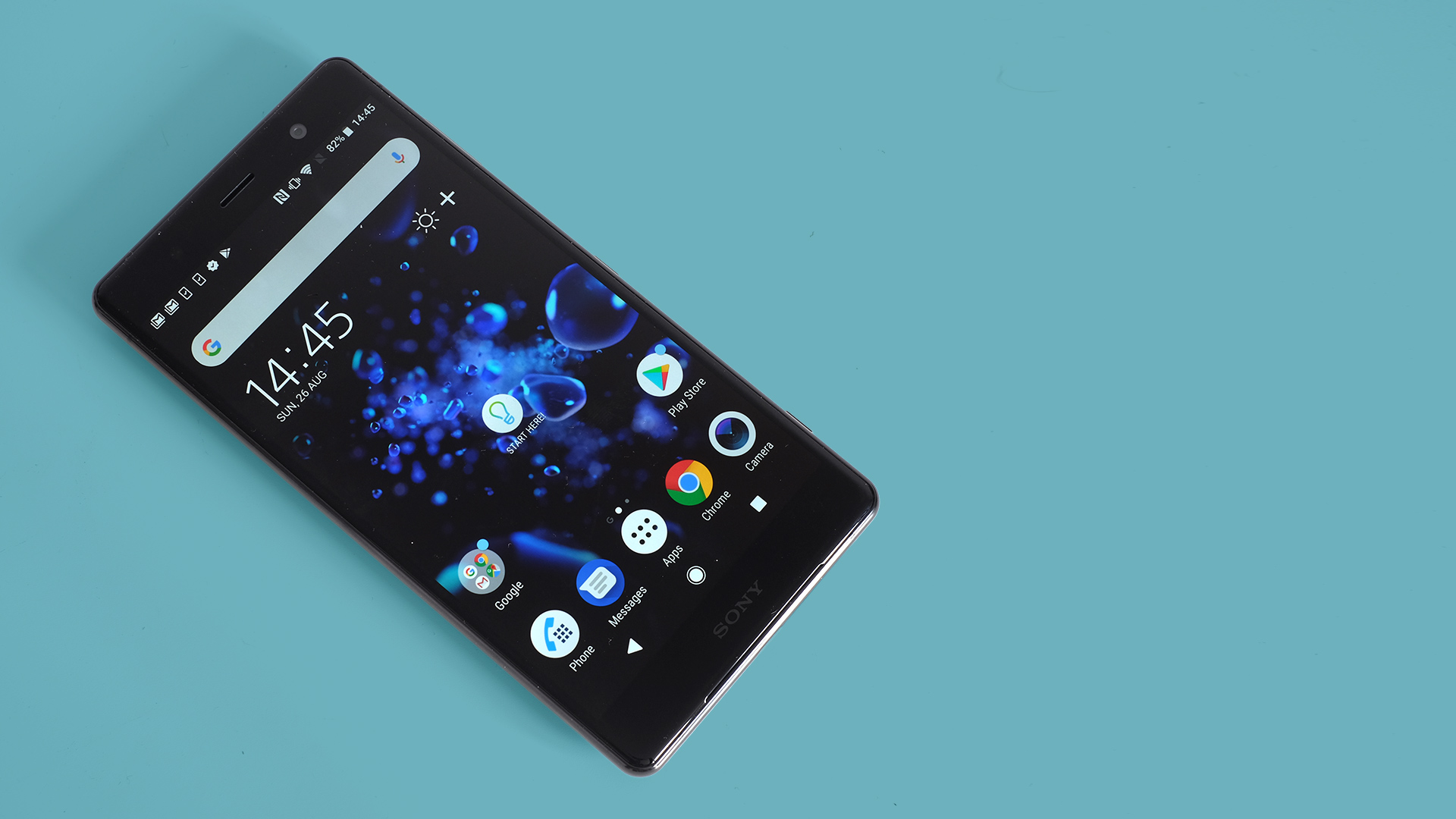
Sony Xperia XZ2 Premium price and availability
- Out now in the US, hits UK on August 31
- Costs $999/£799
Sony announced the Xperia XZ2 Premium in April 2018, before it went on sale at the end of July. It took a little longer to reach the UK, though, with it arriving on August 31.
In the US the Sony Xperia XZ2 Premium price is $999, comparable with the iPhone X, Samsung Galaxy S9 Plus and Samsung Galaxy Note 9.
However, UK buyers get a slightly better deal. At £799 the Sony Xperia XZ2 Premium is a little cheaper than all those high-profile rivals. Currently it's not available in Australia.
The wider context is worth considering too, though. Those after a slick phone with high-end specs should also check out the OnePlus 6 ($529, £469) and Huawei P20 (£499, AU$899), which are as powerful but cost significantly less.
Thanks to the Sony Xperia XZ2 Premium’s relatively late arrival even the Huawei P20 Pro is now available for less than the Sony.
Key features
- High-end specs at a high-end price
- Dual rear cameras
- Snapdragon 845 chipset
The Sony Xperia XZ2 Premium is an unusual phone. It’s one of the few 2018 models to use an old-style 16:9 screen rather than an 18:9 one.
This immediately dates the look, and makes it feel far larger than other phones with a similar screen inch count. However, it’s also the only high profile 2018 flagship with a 4K screen. Samsung, Apple and LG don’t make 4K phones at the moment.
It’s a Sony USP. In person, though, its benefits are not particularly dramatic.
The camera is a better draw. This is, remarkably, Sony’s first dual-rear camera phone. The Sony Xperia XZ2 Premium uses these cameras to great effect too, boosting low light performance.

This phone has almost none of the image quality issues of old Sony Xperia phones. All options at this price are top performers, though, and the XZ2 Premium doesn’t slide ahead of the lot. It just sees Sony phones finally reach where they should be.
Outside of these distinct areas, the Sony Xperia XZ2 Premium has familiar specs. It uses the Snapdragon 845 chipset, seen in several top Androids of 2018, and a 3,540mAh battery with wireless charging.
Storage comes with a slight sting. You get 64GB. At this price we’d like to see 128GB instead, although as the Sony Xperia XZ2 Premium has a microSD card slot this probably shouldn’t put you off buying the phone.
Design
- 158 x 80 x 11.9mm, 236g
- Gorilla Glass 5 rear, aluminum sides
- IP68 water resistance
The Sony Xperia XZ2 Premium is the stubby, tubby king of Android phones. Sony has ignored several recent design trends, and we end up with something quite different to the rest.
But not in an entirely positive sense.
The Sony Xperia XZ2 Premium doesn’t have an ultra-slim screen surround, and is very wide and thick. 11.9mm at its middle, it heads towards twice the thickness of an iPhone X.
At 80mm wide, it also feels larger than the 76.4mm Galaxy Note 9. Add its hefty 236g weight and the Sony Xperia XZ2 Premium starts to look like a mammoth.
There’s no obvious reason either. This phone does not have a gigantic battery or military spec ruggedization. It’s just unusually thick and heavy.

Screen shape is what makes it seem immediately dated. Just about every other phone around the price has an 18:9 or 18.5:9 screen. These displays are longer and taller than the Sony’s, used to fill more of the front with display.
Big borders above and below the screen make the Sony Xperia XZ2 Premium look stout. Put the Sony next to the other $1000 phones and re-imagine them as the school kid cast of an 80s adventure film. The Sony definitely plays the part of the ‘fat’ kid.
Still, the Sony Xperia XZ2 Premium is an immediately eye-catching phone. Its back is a smoothly curved piece of Gorilla Glass 5, the sides shiny, rounded aluminum. It feels expensive, and the curvature of the glass ensures it doesn’t seem as thick as its 11.8mm spec sounds.
Some have complained about how the XZ2 Premium’s smooth glass rear makes it slip all over the place. Maybe our desks are too flat, our hands not smooth enough, but we haven’t found it an issue.

The Sony Xperia XZ2 Premium’s power button and fingerprint scanner placement are odd, though. When the Xperia Z series began in 2013, Sony introduced its ‘OmniBalance’ design. Its core tenet is ‘put stuff in the middle’, expressed in a more flowery manner.
It’s used here, far too literally. The fingerprint sits in the middle of the XZ2 Premium’s back, and it’s far too low. Your finger wants it to be where the camera sits. Making a ‘convenience’ feature like a fingerprint scanner less convenient makes it, you guessed it, worse.
The power button on the side is also a little low, but only by a centimeter, not two inches like the scanner.

Like a lot of past Xperia phones, the Sony Xperia XZ2 Premium is water resistant. It’s certified to IP65/68, meaning it can handle being submerged in water and pelted with water jets. Sony asks you not to test this, mind:
“You should not put the device completely underwater; or expose it to seawater, salt water, chlorinated water, or liquids such as drinks. Abuse and improper use of device will invalidate warranty,” Sony writes on its website.
There’s also no headphone jack. You get an adaptor in the box, but we’d much rather see a 3.5mm socket.
Sony’s Xperia XZ2 Premium is an awkward phone. It’s big and heavy, and its screen shape belongs in 2016, not 2018. You’ll get used to all its odd design elements, but at this price we don’t think we should have to.

Screen
- 5.8-inch 3840 x 2160 Triluminos LCD screen
- 16:9 aspect ratio
- 4K HDR video support
When you look at the Sony Xperia XZ2 Premium’s screen spec, you have to consider more than the numbers. This is a 5.8-inch LCD screen. However, thanks to its 16:9 shape it’s actually as wide as another phone with a display measuring well over six inches.
This is a big-screen phone. Just as we saw when looking at the design, that this screen shape looks dated is a key issue. And it does not make good use of the phone’s footprint. There’s a lot of blank space above and below the display. It doesn’t have a front fingerprint scanner or larger front speakers to excuse the ‘wasted’ space either.
Widescreen moans out of the way, the Sony Xperia XZ2 Premium’s display is otherwise excellent.
It’s super-vivid, rich and sharp. Pixel density of 765 pixels per inch is almost ridiculous. The Galaxy Note 9 offers 516ppi, and we’re well beyond the point of diminishing returns here. You can’t really even tell whether the phone renders Android at 4K or, like the last Premium phone, drops down to 1080p most of the time.

The most obvious benefit is for VR, as even if the games/apps aren’t rendered at 4K, high pixel density still lowers the ‘screen door’ effect, where you can discern the little gaps between pixels. However, VR remains a niche curiosity for most people.
Like the top Samsung phones, Sony lets you choose how vivid you want the XZ2 Premium screen to look. There’s a ‘Professional’ mode that calibrates to the sRGB gamut, a ‘standard’ mode that offers the slightly punched-up tones most people want and Super-Vivid, which maxes-out the abilities of the Triluminos screen.
The XZ2 Premium also supports HDR. This means you can watch HDR content in apps like YouTube and Netflix.
Battery life
- Wireless charging
- 3,540mAh battery doesn't last long
The Sony Xperia XZ2 Premium has a 3,540mAh battery. That’s 360mAh more than the Sony Xperia XZ2, not a huge upgrade given the phone has almost 6,000,000 more screen pixels.
Sure enough, the phone performs poorly in our standard video test. 90 minutes of video at maximum brightness takes 30% off the battery.
This is radically more than the Samsung Galaxy Note 9 (12%) and Huawei P20 Pro (9%). However, it’s only slightly worse than the 27% loss of the Xperia XZ2.
This screen is power-hungry. However, its consumption becomes more ordinary at lower brightness. 30 minutes of Real Racing 3 at 50% screen brightness, for example, takes 11% off the battery. It’s a better result as running a 3D game should in theory be more taxing than playing video, even with reduced screen brightness.
While the phone doesn’t do well in our standard battery test, the Sony Xperia XZ2 Premium’s real-world stamina is at least passable.
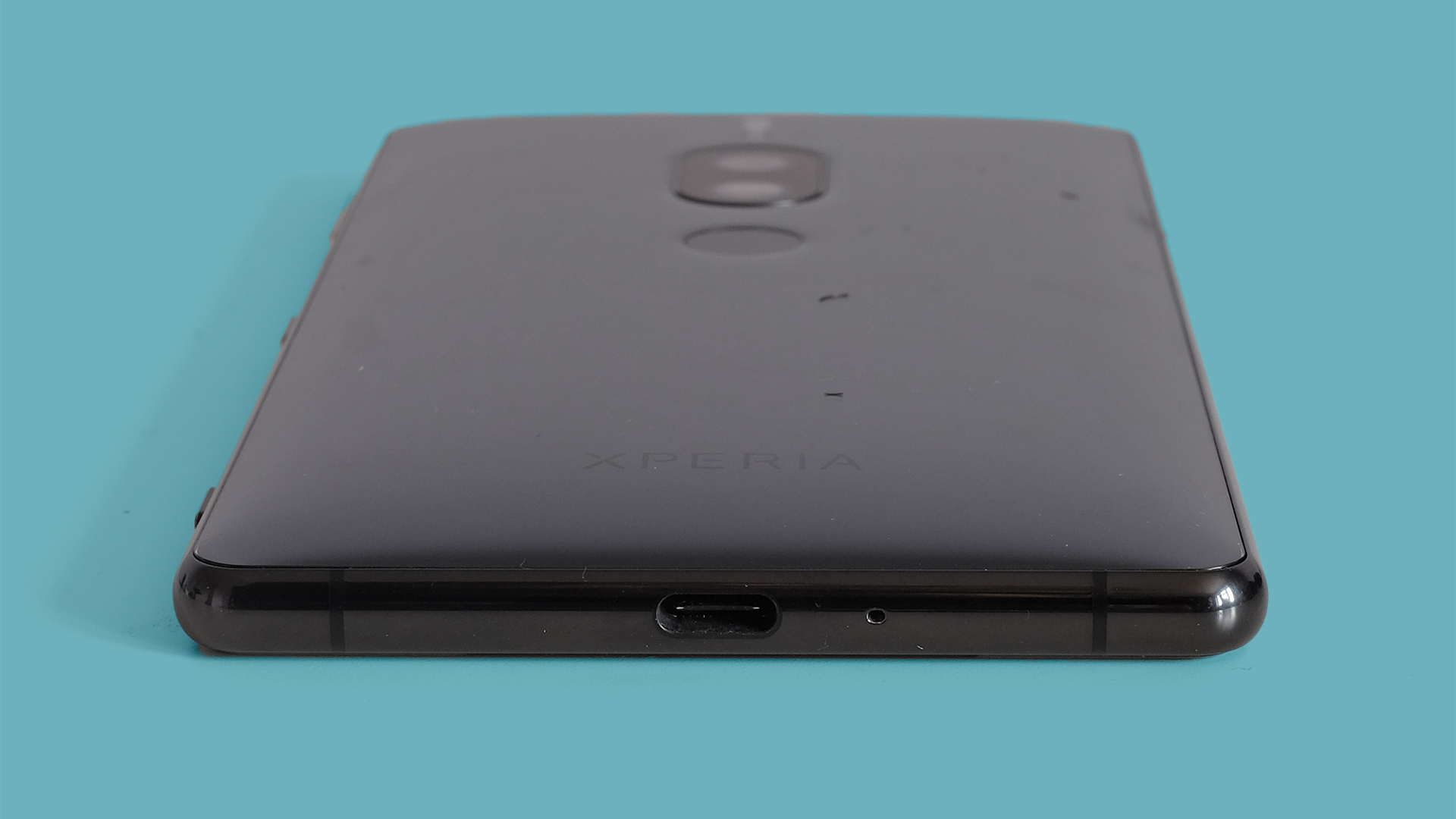
After a full day it tends to have around 10-15% charge left by bed time. This is after several hours of audio streaming and the usual frequent flicks over to messenger apps.
Other phones at the price outlast the Xperia XZ2 Premium, then, especially the Huawei P20 Pro. But the phone does at least offer the minimum battery life we need to avoid getting annoyed.
Charging could also be faster, however. You do get a fast charger with the phone, but it takes (in our testing) exactly 2.5 hours to get it from 0% to full. The first 30% takes 22 minutes, and as usual the last 20% is much slower.
The Sony Xperia XZ2 Premium also supports wireless charging, if you’re keen on the idea.
Camera
- Dual rear 19MP/12MP cameras
- 13MP front camera
- 4K video recording
The Sony Xperia XZ2 Premium has the most interesting camera put into a Sony phone in ages. Top Xperia handsets tend to use very high-res sensors, but almost always worse processing, and hence final photos, than rivals. That is starting to change.
Two cameras sit on the XZ2 Premium’s back. One is a 19MP sensor with an f/1.8 lens, the other a black and white 12MP sensor with very large 1.55-micron sensor pixels.
There’s no ‘optical’ zoom here. The secondary camera is used to boost general image quality, particularly in low light conditions. Huawei used a similar concept: you use the greater native dynamic range and sensitivity of the black and white sensor to improve image quality, for results not possible with the single-color sensor.
This concept seems to work much better here than in Huawei’s older phones. Sony has often offered a low-light mode that makes night scenes bright, but they are generally low on detail.
The Sony Xperia XZ2 Premium can make night scenes look bright and clear, while retaining much more detail than older models.
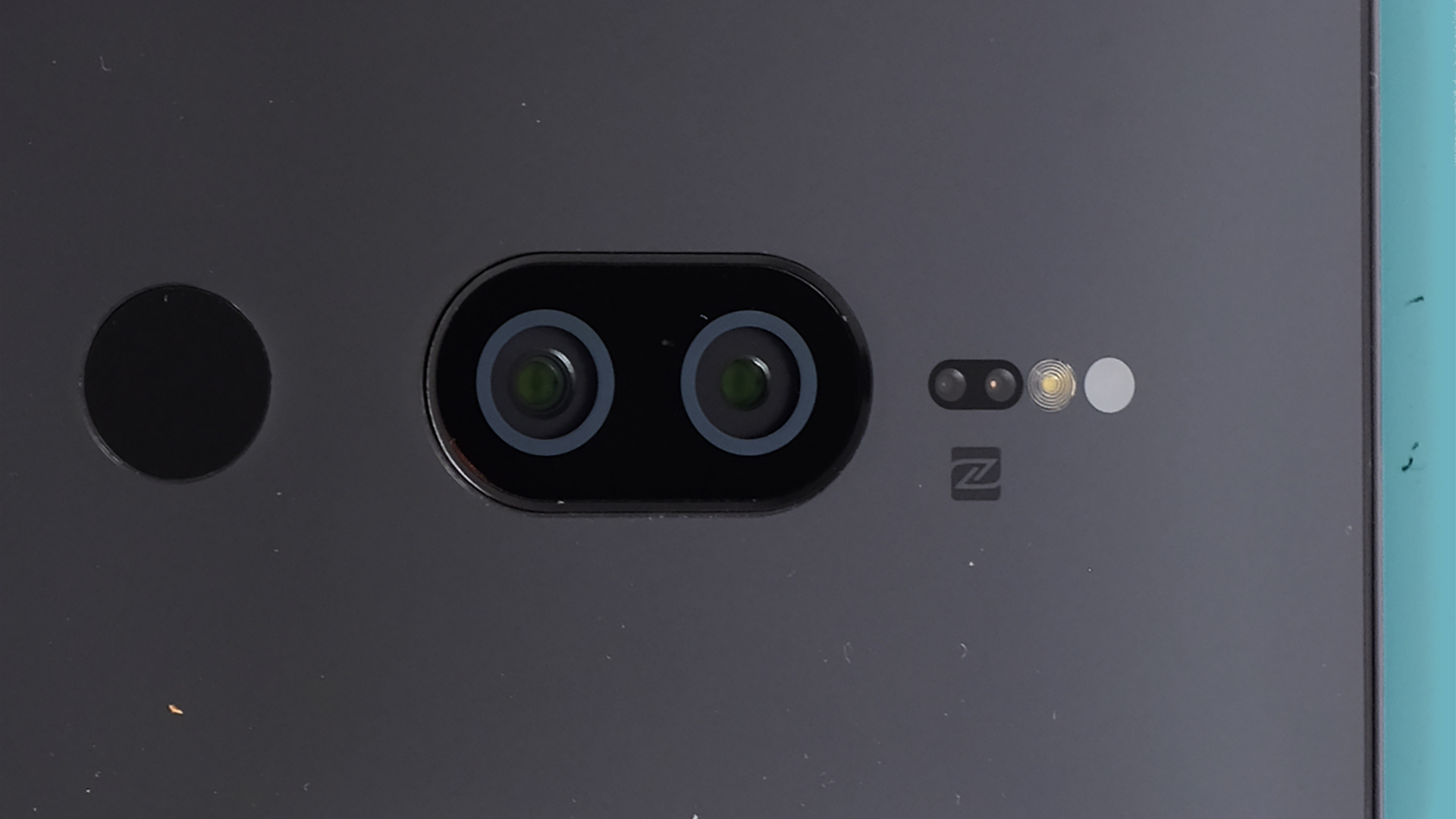
It’s refreshing to review a Sony camera and not come away slightly disappointed. However, does it beat the best? The Huawei P20 Pro offers better dynamic range and detail at night, but it also takes several seconds to take a night image. Sony is much faster.
How about the Note 9? Its night images are slightly more detailed and less noisy than the Sony’s. We also noticed that in the most extreme conditions, when the Sony Xperia XZ2 Premium ramps up to its maximum sensitivity of ISO 51200, sometimes its color reproduction goes haywire.
The Sony Xperia XZ2 Premium can take excellent photos in daylight too, with punchy color, good dynamic range and detail. Once again, though, it doesn’t quite match up to the Samsung Galaxy Note 9.
Samsung’s top phones get you cleaner detail at pixel level. And as is usually the case with top Sony handsets, there’s some detail drop off in the very corners of the frame. Samsung gets you more consistent-looking shots.
However, the Sony Xperia XZ2 Premium is not miles off, and that’s a good result for a Sony flagship. In previous years Xperia phones have been miles behind.
There are some interesting little quirks to note too. For example, maximum resolution when shooting in ‘Auto’ is 17 megapixels rather than the full 19, which you can only use when shooting using the Manual mode. This crops into the frame a little, reducing the effect of the lens’s dodgy edges. Sneaky Sony.
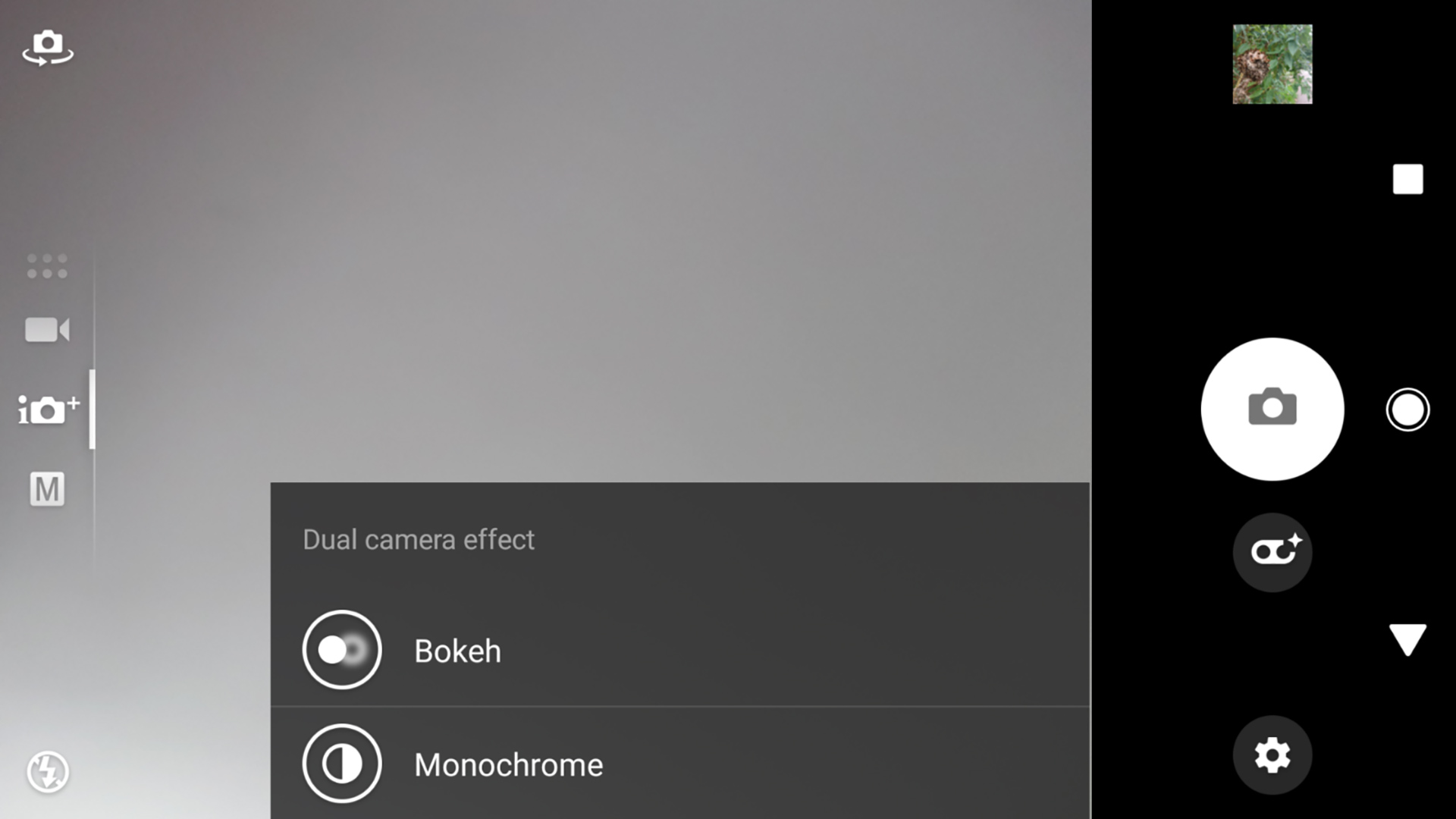
There’s also a Bokeh mode, which uses the two cameras to let you blur out the background in photos. However, you can tell Sony hasn’t been perfecting this for years like Huawei and Samsung. It’s a little slow and you can usually see an outline around blurred and non-blurred objects. And the effect isn’t that dramatic.
Despite some real improvements this year Sony still has some catching-up to do.
Video is a rather different proposition, though. Phones like the Note 9 and Huawei P20 Pro only beat the XZ2 at night because they use optical image stabilization (OIS). This lets them use longer exposures, to improve image quality without drastically increasing ISO sensitivity.
Doing that makes images brighter, but also degrades the image.
OIS is less useful with video as the frame rate limits how slow the shutter can be anyway: if you need to take 30 or 60 frames a second, they need to be 1/30th or 1/60th of a second, max.
Sure enough, the Xperia XZ2 Premium’s low light video is much cleaner than the Note 9’s. However, we did notice some weird motion mess-ups in the background, which may be a result of the phone combining data from the two rear sensors.
Like the XZ2, you can shoot ultra-slow motion video at 960fps. Or less intensely slowed 120fps.
The front camera has a 13MP sensor. The results are pretty good: detailed even in muggy indoor lighting. And the phone can use the screen as a quasi-flash for better results.
Camera samples
Interface
- Android 8.0 software
- Custom Sony interface
- Themes support
The Sony Xperia XZ2 Premium runs Android 8.0 with Sony’s usual custom interface on top. As ever, its aim is to appear cool and slick, with a slightly more serious visual style than Samsung’s UI.
It’s also arguably slightly dated, in that it does not take on board some of the changes Google has made to the Android interface in recent years. For example, you don’t swipe up to get from the home screen to the apps page. You press a button in the dock.
The app drawer also uses pages rather than a vertical scroll. Samsung uses this style too, but this combination of factors makes the Sony Xperia XZ2 Premium’s interface feel like a customized version of an older version of Android, rather than the current one.

However, it's day-to-day performance that matters most and in this respect the Sony Xperia XZ2 Premium is great. Transitions are fast, apps load quick. The phone feels as fast as it should.
There are customizations too. You can choose how many rows and columns of icons fit on a screen, particularly handy in a large phone like this, and Themes let you paste over that characteristic Sony look if you want something different.
The number of third-party pre-installed apps does seem a little cheeky given the Sony Xperia XZ2 Premium’s price, though. Amazon, Kobo and AVG apps are pre-installed, and you can only ‘disable’ rather than fully uninstall them.
However, the practical difference is minor when a phone has a good amount of storage. Don’t get too upset.

The usual Sony pre-installs are here too. Sony Lounge offers ad-like promotions, Xperia Assist is a phone manual in the guise of a chatbot and there are solid apps for music and video.
3D Creator is the most unusual extra. This lets you model real-world objects in 3D using the camera. It’s pretty fluffy when for most of us there’s not much use for it beyond making 3D live wallpapers, but 3D Creator is fun for 10 minutes.
Movies and games
- Good gaming performance
- Solid, but not class-leading speakers
- HDR video support
Like every phone at the price, the Sony Xperia XZ2 Premium is a great games and media machine. It’s particularly strong for YouTube, where content is usually exactly the same ratio as its 16:9 display.
Want to watch 2.35:1 aspect ratio movies? They’ll benefit from the longer screens of a Samsung Galaxy Note 9 or OnePlus 6.
Don’t get super-excited about the 4K resolution either, as most games don’t render at 4K and unless you have eyeballs pressed up against the screen you’d be hard-pressed to notice the difference between 1080p and 4K video here. 1080p video still looks great on a screen like this. Heck, even 720p does.
HDR is perhaps a little more interesting. A limited number of Android apps support HDR video, including Netflix and YouTube.
According to the Netflix website, the XZ2 Premium’s HDR support isn’t here yet. But as the XZ2 does have the feature, it shouldn’t take too long for it to arrive.
What favors does it do for YouTube content? Arguably not a huge amount at this screen size, but it’s a neat thing to check out if you don’t have an HDR TV.
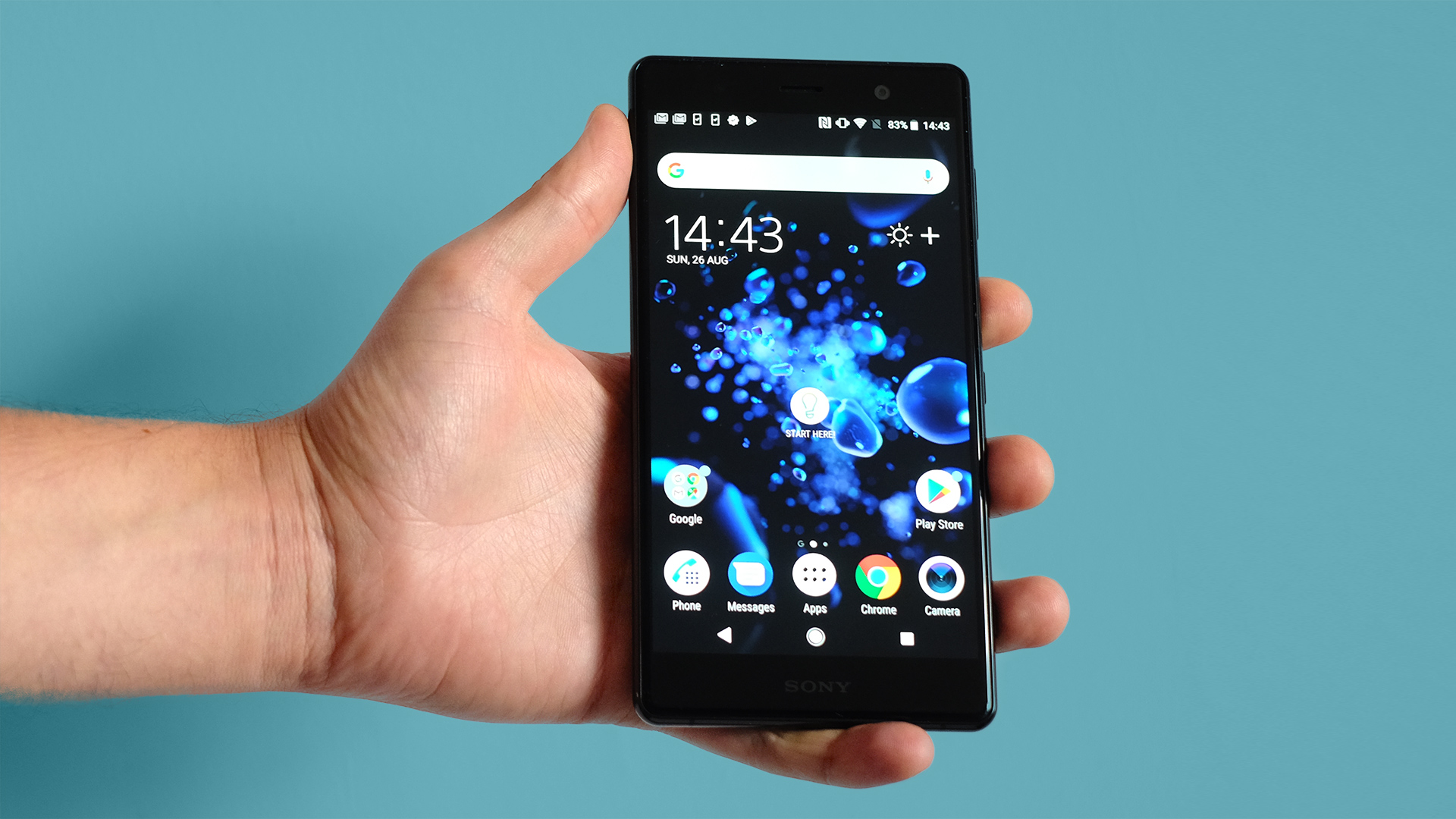
Properly mastered HDR content tends to have richer color and greater contrast than standard footage.
But the retaining of specular highlight detail that is a core part of the ‘dynamic range’ part of HDR just isn’t that apparent on a small display like this, and the added ‘pop’ is most evident with brightness maxed. Do you max-out the screen when watching Netflix on the way to work?
There’s a pretty significant problem at launch too. When playing video, bars of static appear down the screen. This seems to occur regardless of the resolution and whether the footage uses HDR or not. It even appears when reviewing photos.
We haven’t marked the Sony Xperia XZ2 Premium down for this as it seems to be a simple launch bug, but it’s disappointing nevertheless.
This is a great screen, but it would be perceptually very nearly as good with much lower resolution, no HDR and a narrower color gamut. Well, unless you really do like your icons to look radioactive.

The phone also has reasonably good speakers. There are two, one below the screen and one in the earpiece. You get stereo sound, and decent volume. However, Samsung’s recent phones have far better bass. The XZ2 Premium sounds a little thin next to the Note 9.
Similarly, playing games feels great on the Sony Xperia XZ2 Premium, but it’s not an obvious class-leader.
Titles like PUBG and Asphalt 9 run very well and there’s less wait in menu and load screens compared to a lower-end phone like the Motorola Moto G6 Plus. However, we do miss the extra space an 18:9 screen gives your thumbs with console-style games that use virtual stick controls.
Performance and benchmarks
- Snapdragon 845 chipset
- 6GB RAM, great general performance
The Sony Xperia XZ2 Premium uses the Snapdragon 845 chipset, a mainstay of top-end 2018 Androids. It’s an octa-core CPU with Kryo 385 cores and an Adreno 630 graphics chipset.
This is exactly the CPU a phone like this needs, one with more power than most of us will appreciate, to make up for the high price.
In Geekbench 4 the Sony Xperia XZ2 Premium scores 8,429 points. It’s a lot but raw performance is not a good reason to buy the phone when much cheaper models like the OnePlus 6 match it.
The phone has 6GB of fast LPDDR4 RAM. But this is no less than we’d expect for the price.
Verdict
Like the previous Premium phones, the Sony Xperia XZ2 Premium is perhaps less disruptive than Sony hopes. That doesn’t mean it is not a good mobile, just that it struggles to compete against the other extremely impressive phones at the price.
All the bad parts of the Sony Xperia XZ2 Premium sit on its surface like leaves on a swimming pool. The design is in parts dated, the price is pretty high and it’s bigger and heavier than others with no obvious functional benefits to make you forgive this.
To criticize the XZ2 Premium is to state the obvious. But it’s still an important thing to do when the phone costs so much.
However, there are some real bits of progress here. The XZ2 Premium’s camera is the best seen in an Xperia to date. And while it can’t match the best in all conditions, the quality of its low light video is particularly impressive.

Who's this for?
While there isn’t a super-distinct audience for the Xperia XZ2 Premium, it should appeal to the same sort of high-end buyers as those who might consider a Samsung Galaxy S9 Plus, Samsung Galaxy Note 9 or Huawei P20 Pro. These are people willing to spend big on their next phone.
Should you buy it?
This is a solid phone, but certain parts are odd considering how expensive the Sony Xperia XZ2 Premium is. It needs to compete with the very best in the world, and it can’t in some key areas.
After some alternatives? Check out the following options:
Samsung Galaxy Note 9
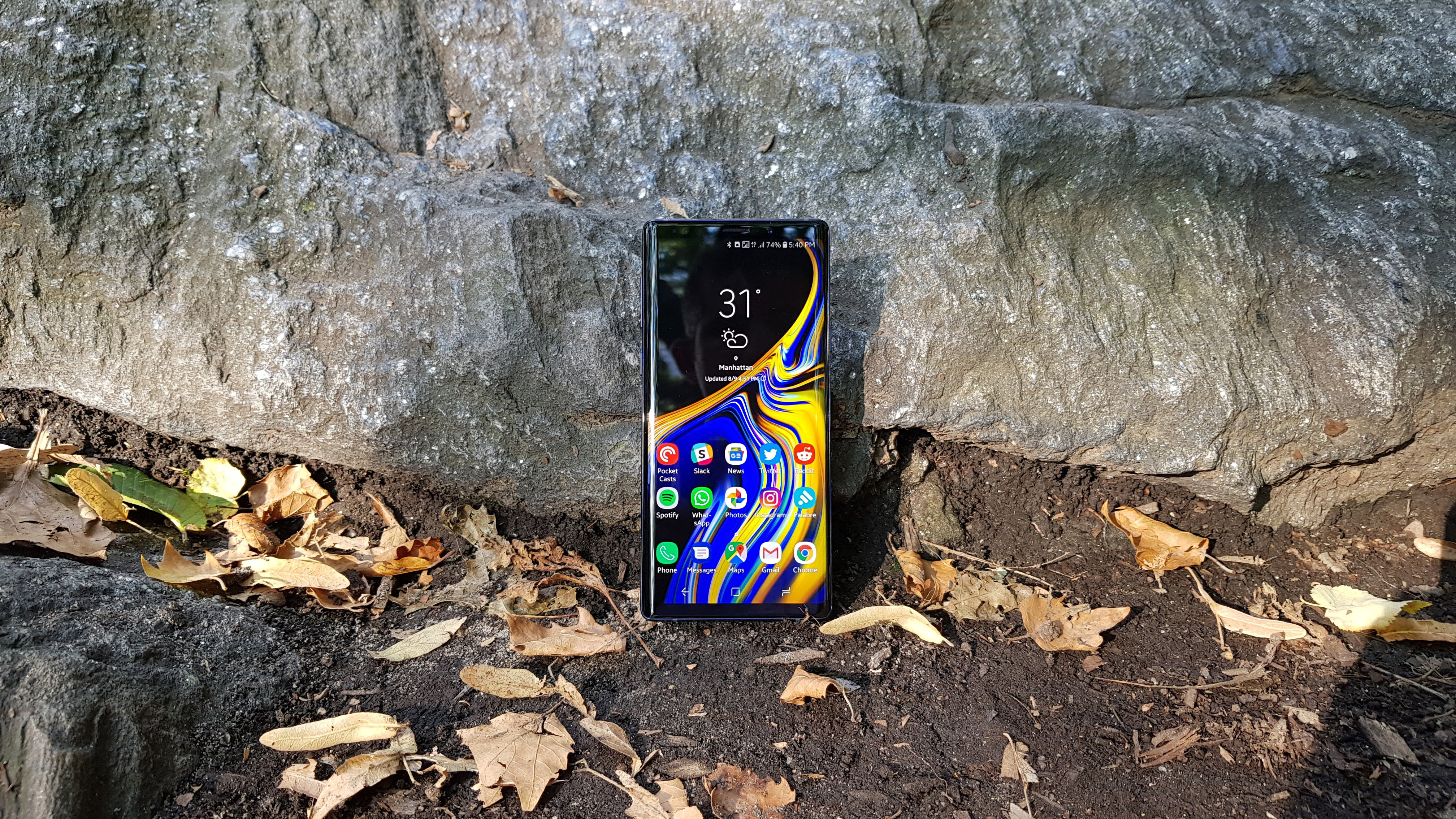
Big screen versus big screen. The Note 9 has a 6.4-inch display, but because it’s an ultra-long one the phone is actually slightly less wide than the Xperia XZ2 Premium. The Samsung is therefore easier to handle.
You also get more storage, a slightly more versatile camera and an OLED screen, which many like. Oh, and the great S-Pen, which gives the phone an entirely different side you won’t see in other phones.
We find the Note 9 an all-round less problematic phone. While the Sony gets close to it in some respects, we’d go for the Samsung.
- Read our full Samsung Galaxy Note 9 review
iPhone X
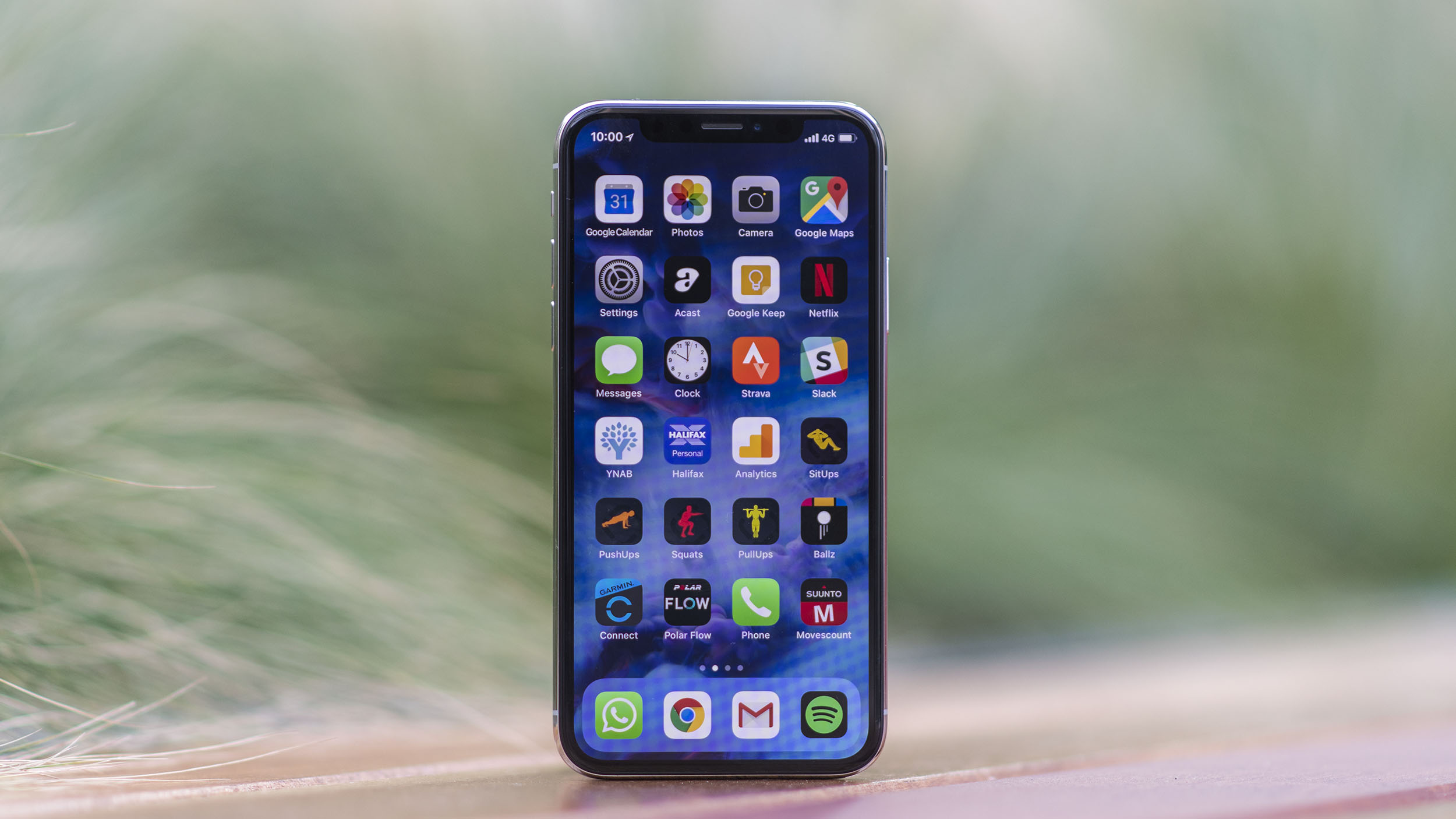
Apple’s most expensive iPhone is far, far smaller than the Sony Xperia XZ2 Premium. They both have 5.8-inch screens, but the iPhone X’s is less wide and a good bit taller. Many of you will find the iPhone easier to get on with, and to use day-to-day.
This comparison does show off the Sony’s low light camera skills, though. Despite having optical image stabilization, the iPhone is worse at capturing night images. However, you do get a zoom, which some of you may prefer anyway. And its background blur mode is much better too.
- Read our full iPhone X review
Sony Xperia XZ2
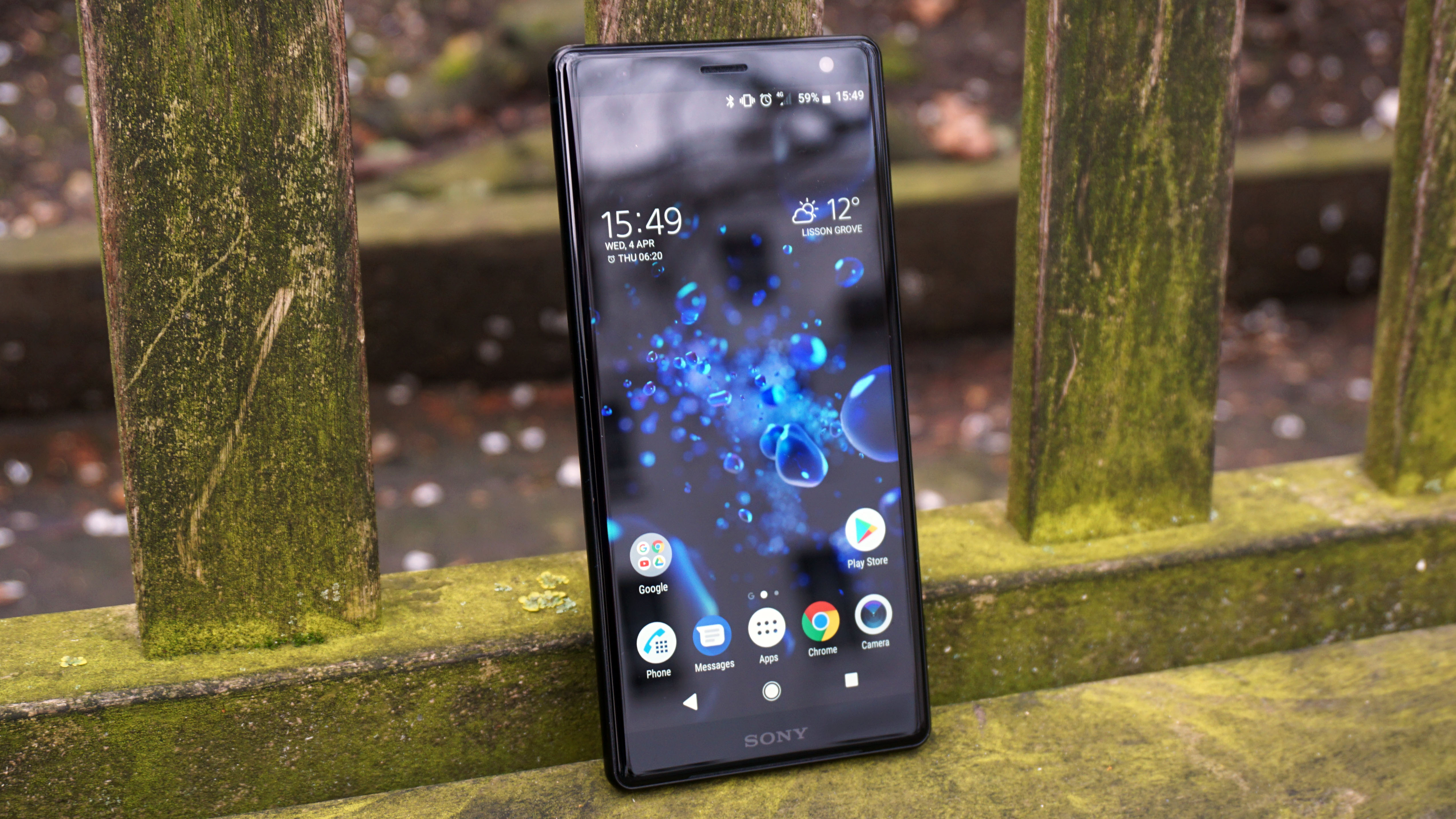
Normal versus Premium? When you take out all the XZ2 Premium’s excesses, you end up with the XZ2. Its 5.7-inch screen only sounds slightly smaller, but as it is an 18:9 display the phone is able to shrink down hugely.
Resolution is a much more normal 1080p too, although still looks sharp to us. The big win for the Premium is, again, the camera. The Premium can take much better ultra-low light photos than the standard XZ2. However, we do find the XZ2 easier to handle and use generally.
- Read our full Sony Xperia XZ2 review
First reviewed: August 2018
0 comments:
Post a Comment